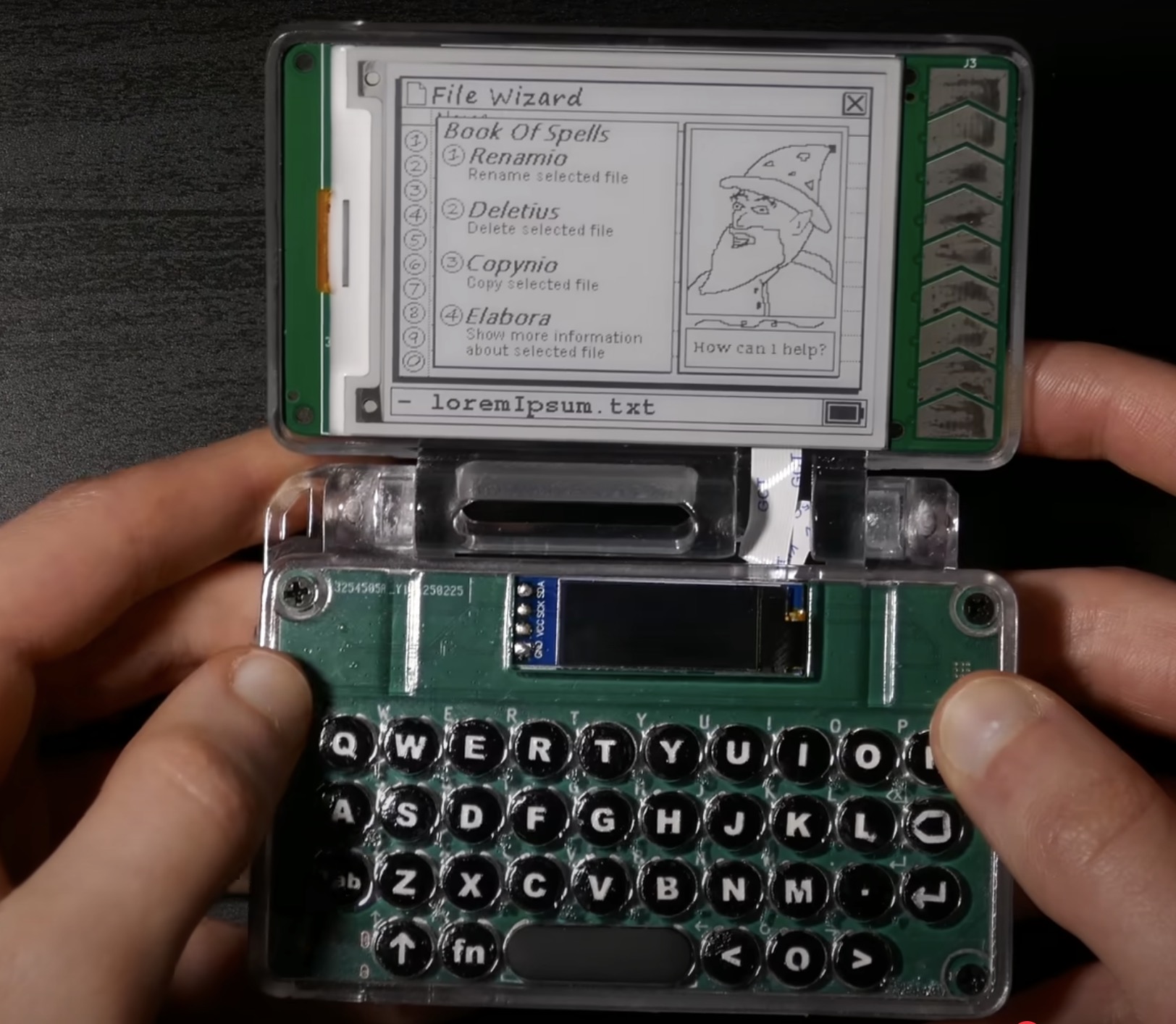Week 17
Woah.. Almost done with the program. :(:
This week’s work explores the potential applications of our projects, identifies the target users, and considers the ethical, social, and environmental consequences of deploying our designs. It's a moment to align our making with meaning and responsibility.
Task
Propose a final project masterpiece that integrates the range of units covered:
As described in the Final Project Page, for the big finale of this program I will be create a Portable Drawing Pad.
A compact device that lets users draw on a resistive touchscreen and view their sketches on an E-Ink display. Designed for creativity on the go, it features stylus input, a 3D-printed enclosure, and navigation buttons to scroll through saved drawings. Inspired by devices like the Nintendo DS, it also includes a unique transparent touchscreen layer for tracing objects or sketches.
I image the users as naturally creative individuals who enjoy drawing on the go and appreciate the tactile feel of paper, but also embrace technology. It’s a simple, user-friendly tool for creating vector drawings that can be transferred to a computer. Artists, designers, and even children could all enjoy and benefit from using it.
In considering the ethical, social, and environmental impact of my project, I’ve aimed to design a tool that promotes creativity and accessibility without contributing to digital overconsumption. It offers a focused tech space, free from the distractions typically found on devices like computers or smartphones.
The Portable Drawing Pad is also open-source, allowing others to learn from the making, adapt, and improve it. Socially, it encourages artistic expression across ages and skill levels, while environmentally, I’ve made conscious choices favoring local fabrication, reusable components, and minimal electronic waste to align the project with sustainable and responsible design practices.
BOM (Bill of Materials)
| # | Item | Qty | Description | Est. Unit Price | Total Price |
|---|---|---|---|---|---|
| 1 | ESP32 | 1 | Wi-Fi & Bluetooth microcontroller | ~€5.00 | €5.00 |
| 2 | Smoky black resin | 1 | Resin for enclosure/3D printing | ~€30.00/kg | ~€30.00 |
| 3 | Li-ion Battery 3.7V 2000mAh | 1 | Rechargeable lithium battery | ~€7.00 | €7.00 |
| 4 | Adafruit LiPo Boost 1000 | 1 | Power boost & charging board | ~€10.00 | €10.00 |
| 5 | Copper board for PCB milling | 1 | Single/double-sided PCB blank | ~€3.00 | €3.00 |
| 6 | 3.3V Voltage Regulator | 1 | Regulates voltage to 3.3V | ~€1.00 | €1.00 |
| 7 | Pushbuttons | 2 | Tactile push buttons | ~€0.10 | €0.20 |
| 8 | 0Ω Resistors | 12 | Zero-ohm jumpers | ~€0.01 | €0.12 |
| 9 | 10kΩ Resistors | 2 | Common pull-up/down resistors | ~€0.05 | €0.10 |
| 10 | 4.2" E-Paper Display (Good Display) | 1 | EPD module | €19.20 | €19.20 |
| 11 | DESPI-C02 Driver | 1 | Driver board for EPD | €5.89 | €5.89 |
| 12 | Resistive Touchscreen | 1 | 4-wire resistive touch panel | ~$10.63 / €9.90 | €9.90 |
Total Estimated Cost: ~€121.41
Your project should incorporate:
- 2D and 3D design.
This will be achieved by using SLA 3D printing to produce the case in resin.
- Additive and subtractive fabrication processes.
I will add acrylic laser-cut pieces to securely hold the resistive touchscreen overlay in place.
- Electronics design and production.
The PCB design will be created in KiCad and will feature MCUs (ESP32-S3) along with third-party modules such as the TP4046 battery management system, the Goodisplay driver.
- Embedded microcontroller interfacing and programming.
The embedded electronics will be milled at the FabLab, and I will solder the components and modules myself.
- System integration and packaging.
The case will be designed in Blender, 3D printed, and assembled manually. The packaging will be made from laser-cut cardboard.
- Where possible, you should make rather than buy the parts of your project.
The purchased parts include modules and components that cannot be fabricated in our local lab. All other components(eg. the stylus) will be handmade by me and assembled into a fully functioning integrated system.
One project I use for reference is this one:

The creator is building a personal digital assistant device for note-taking and productivity. They showcase the device's features, including a text editor, file system, and custom keyboard. The video also details the design process, including the use of clear resin for the shell and silicone for the buttons so I find it extremely useful and inspiring.
I will use similar materials, such as smoky-black resin and laser-cut, transparent acrylic. I'm taking note of the hinge mechanism, which will be one of my biggest challenges.
So far I've completed communicating the E-ink display with the resistive touchscreen using a ESP32s3 based board (Barduino). I have the PCB and case design pending.
See Final Project Requirements for a complete list of requirements to be fulfil.